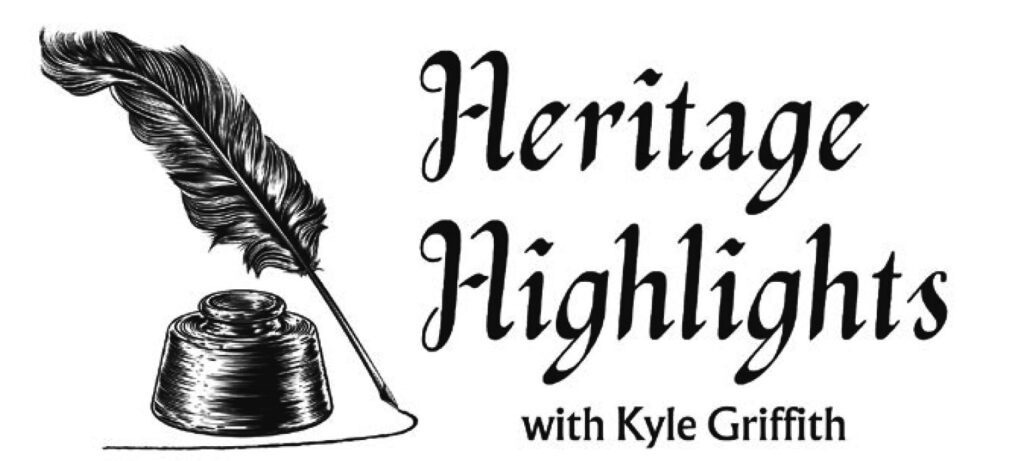
**This research was first published in the July 24, 2024 edition of the Chatham Star-Tribune newspaper as part of Kyle Griffith’s weekly segment entitled “Heritage Highlights.”
1887 Map of Danville showing the Acree’s and Banner Tobacco Warehouses.
As a cityscape, the land is subjected to constant alteration and wear that may appear unrecognizable after a few years. Historic fire insurance maps help convey the drastic evolution of business and technology, especially during Southside Virginia’s golden age of tobacco manufactory. During the late nineteenth century, tobacconists in Danville certainly kept the brickmaker’s industry prosperous. The 1886 Sanborn Map for Danville shows Acree’s Tobacco Warehouse on the corner of Craghead and Loyal Streets as building 405 on block 23. The building contained thirteen skylights over the warehouse, two office rooms, and a tobacco storage room. Horse sheds lined the backside. Adjacent, an empty space allowed for the maneuver of wagons to several more horse sheds. In the middle of this lot stood a two-story brick “camp house.” Acree owned another adjacent single-story tobacco storehouse with two large rooms and an office space. Continuing east, an open pathway zig-zagged through the block to Bridge Street, lined with horse sheds and a two-story kitchen building in the crook. Next sat a vacant dwelling house and a wagon/blacksmith shop. Approaching the corner of Craghead and Newton Streets sat W. N. Shelton’s Dry Prizery and a Leaf Tobacco Prizery owned by Williamson & Friend. Both were three stories tall.
Traveling north on Newton, F. X. Burton’s Dry Prizery was surrounded by a couple of small dwellings, two cabins, a shed, paint shop, and a kitchen building. Moreover, there was a big two-story house with a basement and back addition. At the corner of Newton and Bridge were two businesses owned by Adams & Company. The first, “William Irvine Jr. & Co. Dry Prizer” was four stories tall with an office room and two stoves. Then, “Oyler, Chambers & Co. Plug & Twist Tobacco Factory,” was equipped with steam heating, a stove in the office, and gas lighting. The 4th floor contained a steam licorice kettle for flavoring the twists of tobacco.
To the west along Bridge Street, Theo. Royalty & Co. Livery had two large stables and a buggy shed, which neighbored the zig-zagging drive through from Craghead. The Banner Tobacco Warehouse was about as large as Acree’s and stayed illuminated by twenty-four skylight windows. Further west, a two-story tobacco storage house of T. C. Williams was wedged between Banner and its equally large neighbor. The expanse of Public Tobacco Warehouse (under T. L. Poindexter and Son) reached the corner of Bridge and Loyal Streets. The building had “formerly frame” walls replaced with brick.
Southward along Loyal Street, T. J. Lee owned a leaf tobacco prizery and a plug tobacco factory which operated out of two buildings, each four stories tall. A driveway between the buildings led back to a selection of horse sheds and a kitchen. Finally, just south of the plug factory was an alleyway behind Acree’s leading to the horse sheds first described.
Thirty-four years later, a map from 1920 shows grand expansions. Acree’s and Banner merged into a large brick mass comprising about two-thirds of the entire block. “Acree’s Tobacco Sales Warehouse” featured electric lights, four stores, a camp room, and an assortment of other unlabeled rooms on the upper floors. Neither business had heating, and Banner hired a night watchman. Under their tall wooden trussed roof full of skylights, the culture of tobacco auctions and sales were perfected in Danville’s own style.
The corner of Bridge and Newton Streets supported the R. J. Reynolds Tobacco Co. Storage Shed Number 4. From Newton Street, a line of railway entered the block to facilitate loading freight deliveries. The corner of Newton and Craghead was occupied by John E. Hughes & Co. Leaf Tobacco within two tall four-story brick buildings. The business was equipped with steam jets and an impressive 40 horsepower engine. (Many early automobiles only had 20 to 30 HP). Processes in each room included receiving, picking, stemming, hanging, storing, and prizing tobacco. At the site of the old wagon & blacksmith shop, a modern brick and iron-clad building with a concrete floor served as the “Southern Auto Company Garage.” What existed as two horse stables beside Acree’s more than 30 years earlier was labeled simply, “(OLD)” in the new era of the automobile.
The thriving nature of Danville from over a century ago is difficult to imagine. Thankfully, the parts that still survive help orient the present to the past. In modern times, the historic block is split by Wilson Street and Acree’s exists as a heavily altered building used for public parking.
1891 Acree’s Warehouse Tobacco Sales Receipt for Ephraim Pruett, ancestor of Kyle Griffith
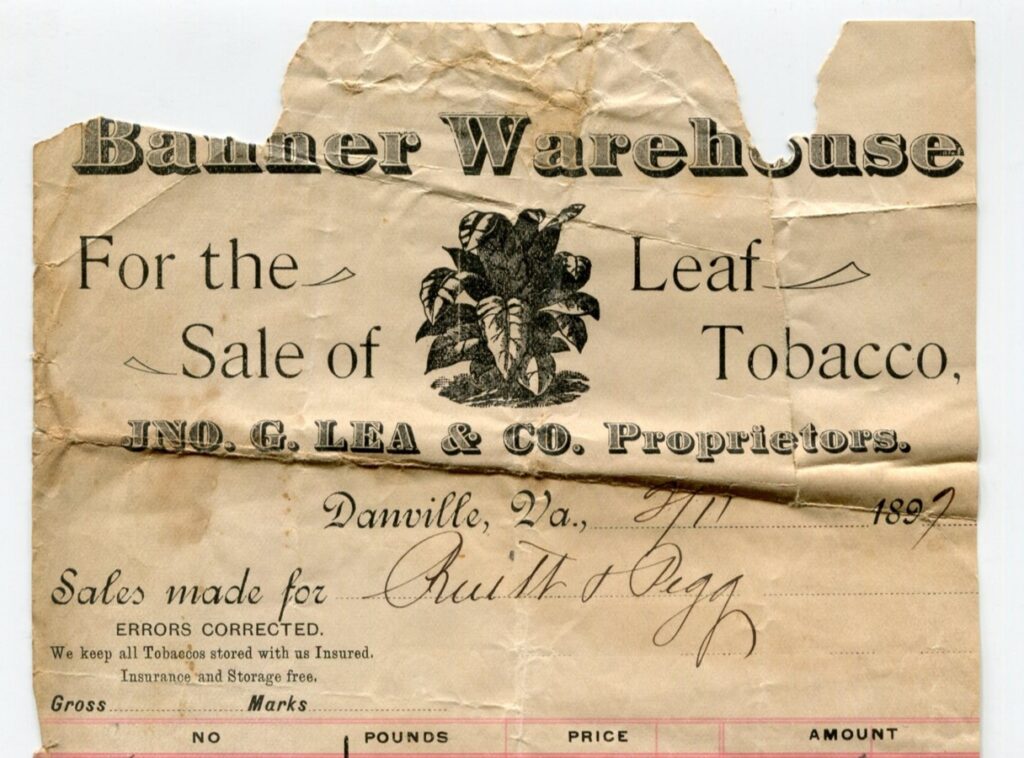
1897 Banner Warehouse Tobacco Sales Receipt for Ephraim Pruett and Hezekiah Pigg
1920 Map showing the expansions of Acree’s and Banner Warehouses

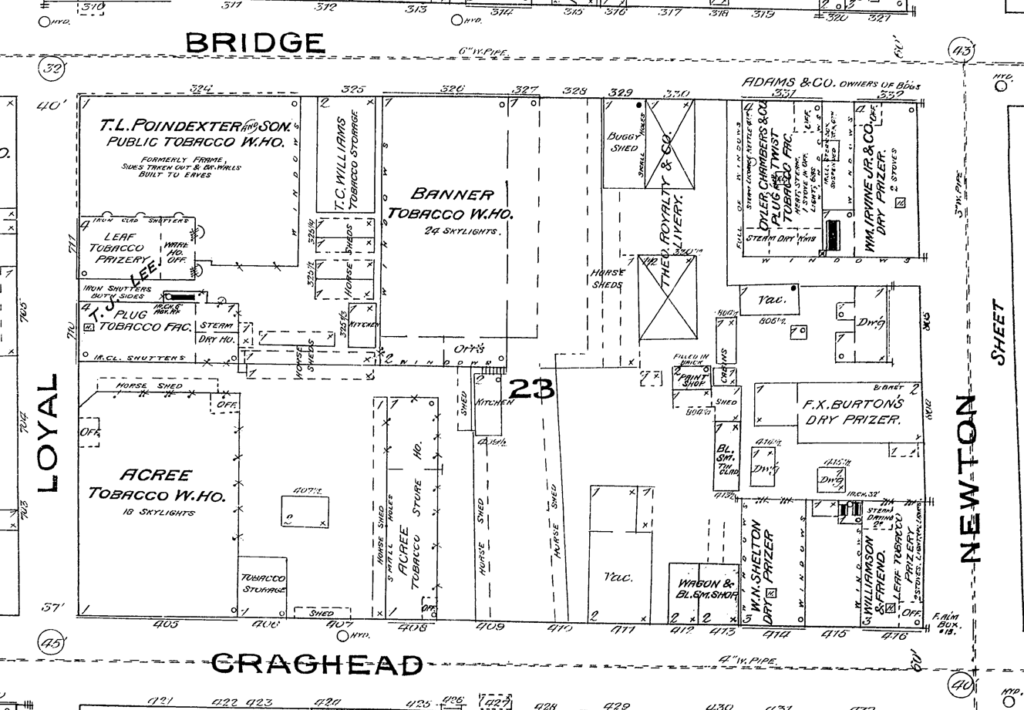
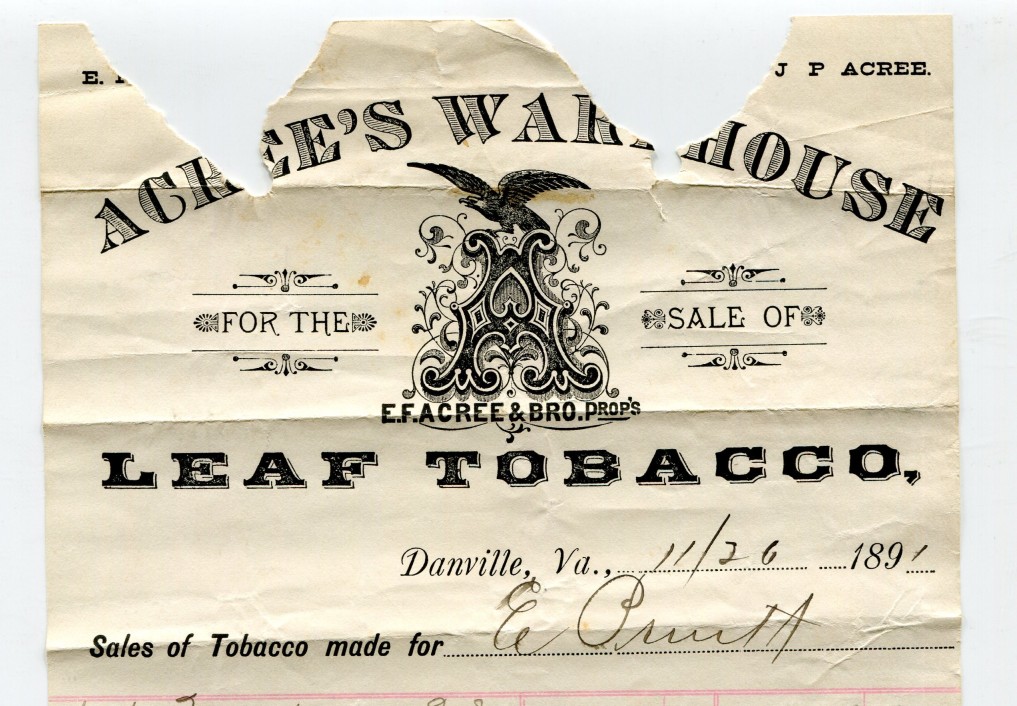
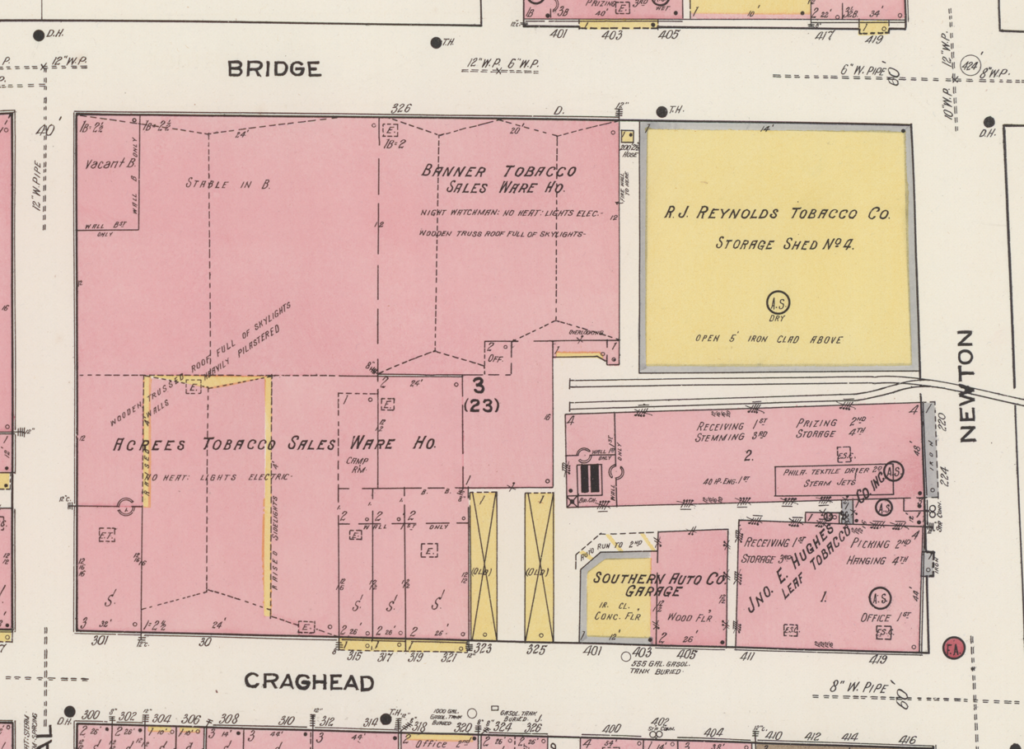
Margaret Gupton